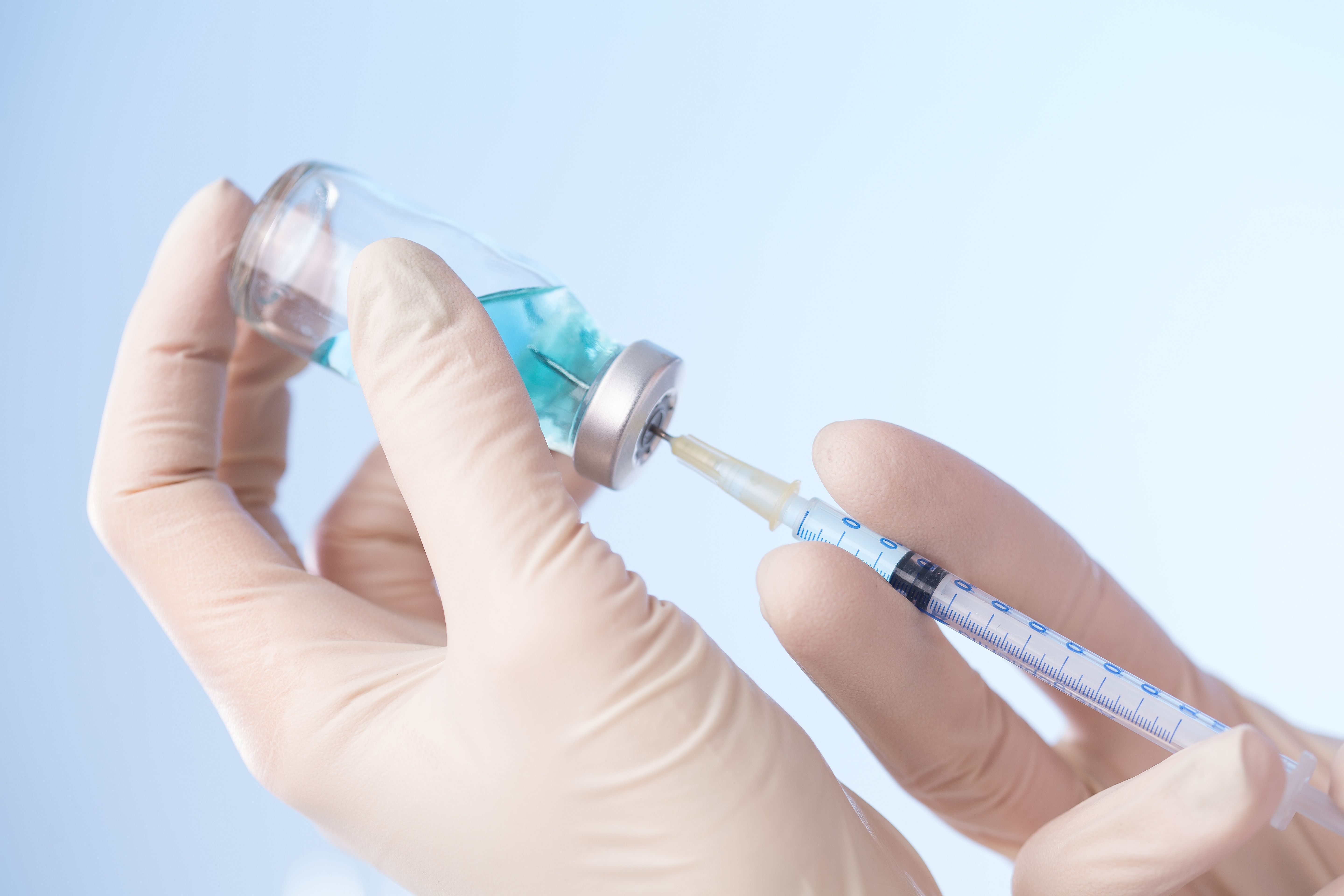News
Article
Two-Dose Hepatitis E Virus Vaccination Regimen Demonstrates Efficacy, Study Finds
Author(s):
Key Takeaways
- A 2-dose Hecolin regimen shows promise against HEV genotype 1, offering a more accessible alternative to the 3-dose regimen.
- The study found a 2-dose vaccine effectiveness of 67.8%, increasing to 84.0% after adjusting for confounders.
The study shows benefits when Hecolin (HEV 239; Xiamen Innovax Biotech Co Ltd) is administered in 2 doses, rather than the typical 3-dose regimen.
Image credit: anidimi | stock.adobe.com

Research published in The Lancet Infectious Diseases found that a 2-dose regimen of Hecolin (HEV 239; Xiamen Innovax Biotech Co Ltd) shows benefits when used against hepatitis E virus (HEV) genotype 1 during a protracted outbreak in Sudan. Despite the rather small sample size, the investigators are optimistic of the regimen’s efficacy and its accessibility compared with a current 3-dose regimen.1
HEV is a common cause of acute viral hepatitis, and genotypes 1 and 2 are transmitted through contaminated food and water, causing large outbreaks across Asia and Africa. The global burden of hepatitis E is difficult to estimate because of poor clinical surveillance and laboratory testing, according to the authors, but 1 publication suggests that there were over 70,000 deaths attributable to HEV genotypes 1 and 2 in 2005.1
"Symptoms of hepatitis E are similar to other diseases that cause acute jaundice, making it difficult to detect. While we don’t have precise estimates of the global burden, some have put it at around 50,000 deaths a year,’’ Andrew Azman, PhD, MHS, MS, epidemiologist in the Centre for Emerging Viral Disease at the Université de Genève Hôpitaux Universitaires de Genève (UNIGE-HUG), said in a news release.2
Currently, there is a 3-dose recombinant vaccine, Hecolin, that has demonstrated efficacy and favorable safety profiles across clinical trials. These trials showed that, when following the complete regimen (administrations at months 0, 1, and 6), patients experienced a 100% protective efficacy against clinically apparent HEV infections (nearly all genotype 4). For the current study, the investigators measured the short-term effectiveness of a reduced 2-dose schedule of Hecolin in the prevention of medically attended hepatitis E.1
This case-control study evaluated patients with acute jaundice who were suspected to have HEV and seeking care at the Médecins Sans Frontières hospital. Patients who were considered eligible for vaccination had to be 16 to 40 years of age and be living in the Bentiu internally displaced persons camp within South Sudan. Further, confirmed cases were defined as individuals who tested positive for hepatitis E by RT-PCR or anti-HEV IgM enzyme-linked immunosorbent assay (ELISA). Each case was matched to 6 controls by age, sex, pregnancy status, and residence. In addition, self-reported vaccination status was verified through vaccination cards.1
The primary analysis was 2-dose vaccine effectiveness, which was estimated with a matched case-control design using conditional logistic regression models. Secondary analyses estimated vaccine effectiveness using a test-negative design and the screening method. In addition, test-negative cases and their matched controls were utilized as a bias indicator analysis to help quantify potential health seeking behavior biases.1
"…it was essential to study the vaccine’s effectiveness on other populations and in regions where the type of virus circulating is different from China, as well as the logistical feasibility of such a campaign,’’ Isabella Eckerle, professor at the Faculty of Medicine and director of the Centre for Emerging Viral Diseases at UNIGE-HUG, said in the news release. ‘‘In particular, it was important to understand its effectiveness after just 2 doses, whereas it is usually administered in 3 doses 6 months apart.”2
Between May 10 and December 10, 2022, a total of 859 patients with suspected HEV were identified, and among these patients, 201 had met the study’s eligibility criteria and 21 cases had been confirmed by a laboratory. Among the confirmed cases, approximately 48% (n = 10) were unvaccinated, compared with 27% (n = 33) of the 121 matched controls.1
In the primary analysis, the authors estimated an unadjusted 2-dose vaccine effectiveness of approximately 67.8% (95% CI –28.6 to 91.9), and this increased to 84.0% (95% CI –208.5 to 99.2) following the adjustment for potential confounders. Additionally, the authors noted that the bias indicator suggested that test-negative cases may have been more likely to have been vaccinated compared with their matched community controls because of different health care-seeking behaviors, therefore, there could be an underestimation of effectiveness present.1
“Despite fewer hepatitis E cases than expected after vaccination, our study revealed that 2 doses of vaccine [were] effective, an excellent result given the particular context of a camp for displaced people,” Iza Ciglenecki, MD, MSc, operational research coordinator at Médecins Sans Frontières in Switzerland, said in the news release.2
Further, the test-negative design—which implemented facility-matched controls—led to an adjusted 2-dose effectiveness of about 89.4% (95% CI 56.4 to 98.0). This indicates the benefit of implementing the 2-dose regimen when used against HEV genotype 1 in certain contexts, the authors said.1
"Our results combined with others helped lead to recent approval by WHO’s International Coordinating Group on Vaccine Provision of a stockpile of hepatitis E vaccines for emergencies. This stockpile has the potential to save many lives and we’re looking forward to seeing it in action. These results have also already contributed to the WHO recommendations on the use of a 2-dose schedule”, Azman said in the news release.2
REFERENCES
1. Nesbitt RC, Kinya Asilaza V, Alvarez C, et al. The effectiveness of two doses of recombinant hepatitis E vaccine in response to an outbreak in Bentiu, South Sudan: a case–control and bias indicator study. Lancet Infect Dis. 2025. doi:10.1016/S1473-3099(24)00657-1Top of FormBottom of Form
2. Université de Genève. Hepatitis E vaccination is effective in an epidemic. News release. January 14, 2025. Accessed January 14, 2025. https://www.eurekalert.org/news-releases/1070407
Newsletter
Stay informed on drug updates, treatment guidelines, and pharmacy practice trends—subscribe to Pharmacy Times for weekly clinical insights.





